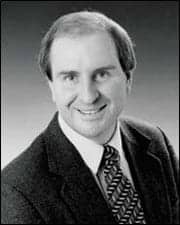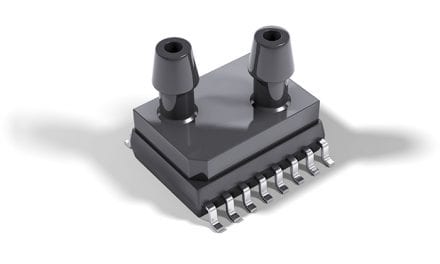The perks and pitfalls of scoring a sleep study while the recording is in progress.
 |
Scoring a sleep study while the recording is in progress is a topic that often raises heated debate among sleep technologists. Proponents of the practice suggest that “scoring on the fly” helps the night staff develop their scoring skills and leads to better quality sleep studies, whereas opponents argue that recording and scoring a study at the same time overburdens technologists and could potentially lead to patient neglect.
Scoring on the fly is not a new idea. Even in the days of paper-based studies, technologists would sometimes remove part of the record from the collection basket and begin scoring while monitoring the rest of the recording. If the night was not too busy, the entire study would be scored by morning. However, paper-based studies generally required greater attention than present-day digital recordings. Pens would run dry; the paper did not always fold correctly; frequent adjustments had to be made to the polygraph—all these activities kept technologists on their feet for a good portion of the night. In some sleep centers, a single technologist would often monitor three patients at the same time, leaving little time for any additional work.
Today’s digital sleep recordings are less labor intensive than paper-based studies of the past, and most sleep centers maintain a two to one patient-technologist ratio, leaving time for extra activities during the night. However, the need for attending to the patients and maintaining recording quality remains the same. Those who report successful outcomes with scoring on the fly usually describe the policy as flexible, meaning that patient care always comes first. Thus, technologists are encouraged, but not required, to either partially or completely score the studies based on the workload for each night.
PRACTICAL CONSIDERATIONS
Like any administrative policy, scoring on the fly is a practice that needs to be carefully evaluated and planned according to each sleep center’s individual needs and resources. A large sleep center with busy nighttime staff and adequate daytime coverage may not necessarily benefit from nighttime scoring, especially when experience levels among the staff vary, causing scoring discrepancies. As an alternative to scoring on the fly, technologists interested in learning or improving their scoring skills may be transferred to a day or swing shift schedule, either temporarily or permanently, depending on the requirements of the sleep center. This allows technologists to focus their attention exclusively on scoring, as well as to interact with the day staff and the medical director for immediate feedback regarding their work.
When instituting scoring policies, consider individual aptitudes for scoring. Some technologists have a natural ability to score records and enjoy the process. Others find scoring tedious and monotonous. These individuals might provide excellent patient care and do a good job maintaining sleep studies, but dislike the task of scoring and subsequently do a poor job. As with any work assignment, it is helpful to match each person’s talents and abilities with the type of job they are best suited for.
Personal motivation is another consideration. Some technologists are content with an established routine, while others are seeking to improve their skills. Clearly, technologists should never be discouraged from scoring records, especially if doing so helps them better understand sleep physiology, produce better records, and potentially advance their careers. Theoretically, technologists who have passed their registry examination should be able to score polysomnograms; however, in practice, this is not always the case. In those instances when sleep technologists have not had sufficient scoring experience, scoring on the fly offers a way to bridge that gap. However, the decision for who scores the records (and when) should be made by the physicians who read the studies, because ultimately they are responsible for the validity and accuracy of the reports.
Scoring on the fly works best when technologists feel supported by their supervisors and coworkers. If technologists believe they are asked to score on the fly simply to save operating costs, they may become resentful. Likewise, if technologists feel overburdened, they will become dissatisfied with their job. In contrast, if technologists are given the opportunity to score records so they can improve their skills, with reasonable expectations regarding productivity (especially on busy nights), then the idea of scoring on the fly may be more palatable. To help facilitate nighttime scoring, it is important to establish a teamwork approach among the night staff, whereby everyone pitches in to get the other aspects of the night work completed without compromise.
CONTRAINDICATIONS FOR SCORING ON THE FLY
Despite some of the potential benefits of scoring on the fly, problems may arise when technologists attempt to perform multiple tasks on the computer, including simultaneously monitoring and scoring the record. It is generally impractical to score each epoch as it is being generated, because scoring is often contingent on viewing the data within the context of the recording. To do so, the technologist must be able to review the data from the beginning of the study; however, this means that the real-time data could be temporarily ignored. Unless the technologist frequently shifts from scoring to viewing the real-time data, recording artifacts might be neglected or, more importantly, serious events could be overlooked.
Even if the technologist conscientiously performs the dual task of scoring and monitoring the study, one’s overall perception of the data may be altered by the process. In contrast, scoring the record after it has been completed allows the scorer to fully focus on the data within the context of the entire study—an essential benefit, especially when the study is complicated. A daytime scorer is able to more systematically review all pertinent information, including the night technologist’s notes and observations, to formulate the most accurate impression of the data.
An obvious problem with scoring on the fly arises when technologists are required to fulfill a certain quota every night regardless of the circumstances. In this type of situation, corners can easily be cut in terms of both patient care and scoring accuracy. Technologists are likely to become frustrated and either neglect their duties or rush through the scoring process just to complete the task by morning. As noted earlier, the best outcomes with scoring on the fly can be expected when technologists are given plenty of flexibility regarding how much scoring is actually done on any given night.
ADDITIONAL CONSIDERATIONS
Sleep record scoring is a labor-intensive task that requires sufficient knowledge and experience. Accurate scoring relies on multiple factors, including the quality of the recorded signals, the scorer’s ability to differentiate clinically significant events from normal variants of sleep-wake physiology and from recording artifacts, and the implementation of pattern recognition skills relative to each individual recording. Short cuts to scoring, including automated scoring, generally degrade rather than enhance the process. Learning how to score sleep records can benefit night technologists because it helps them better understand sleep physiology, identify artifacts, and potentially produce better quality recordings. However, it is essential to understand that scoring sleep records cannot be performed in a “cookbook” fashion. Accurate and meaningful scoring requires moving beyond basic rules to applying professional clinical judgment to each individual study. This is a learning process that takes time and requires sufficient feedback from experienced personnel.
Ideally, all technologists should have at least some exposure to scoring, even if their job does not require them to perform scoring on a regular basis. Scoring on the fly (when instituted judiciously) can help facilitate this process. Most contemporary digital recording systems offer provisions for generating multiple scoring files. A novice scorer might try scoring some records, either partially or completely, and compare the results with those from the experts. When performing scoring comparisons, it is more relevant to examine overall trends instead of focusing on epoch-by-epoch scores, because the latter may not always match precisely. When learning to score, it is arguably more important to capture the essence of the study rather than try to precisely match each individual score with another scorer’s.
Scoring on the fly is an option that deserves consideration; however, it is a concept that works for some sleep centers and not for others. It is a practice that can either enhance or diminish a sleep center’s performance, depending on individual situations. It might help technologists produce a better study or it might detract them from their primary task. It could potentially reduce turnaround times if the night staff becomes proficient at delivering accurate reports, but it could result in errors and discrepancies if the staff is inexperienced or if the work is performed in a sloppy, inattentive manner.
Above all, the primary consideration regarding scoring on the fly is to make certain it does not affect patient care, and that attending to the patient’s needs and safety takes precedence over other assignments. It might be suggested that scoring on the fly can be an option for select individuals who are interested in advancing their skills, performed under supervision to ensure scoring accuracy, making sure not to compromise the most important aspect of the study, which is taking proper care of the sleep disorders patient.
Nic Butkov, RPSGT, is education coordinator at the Rogue Valley Sleep Center, CEO of Synapse Media Inc, and director of the School of Clinical Polysomnography in Medford, Ore. He can be reached at [email protected].



